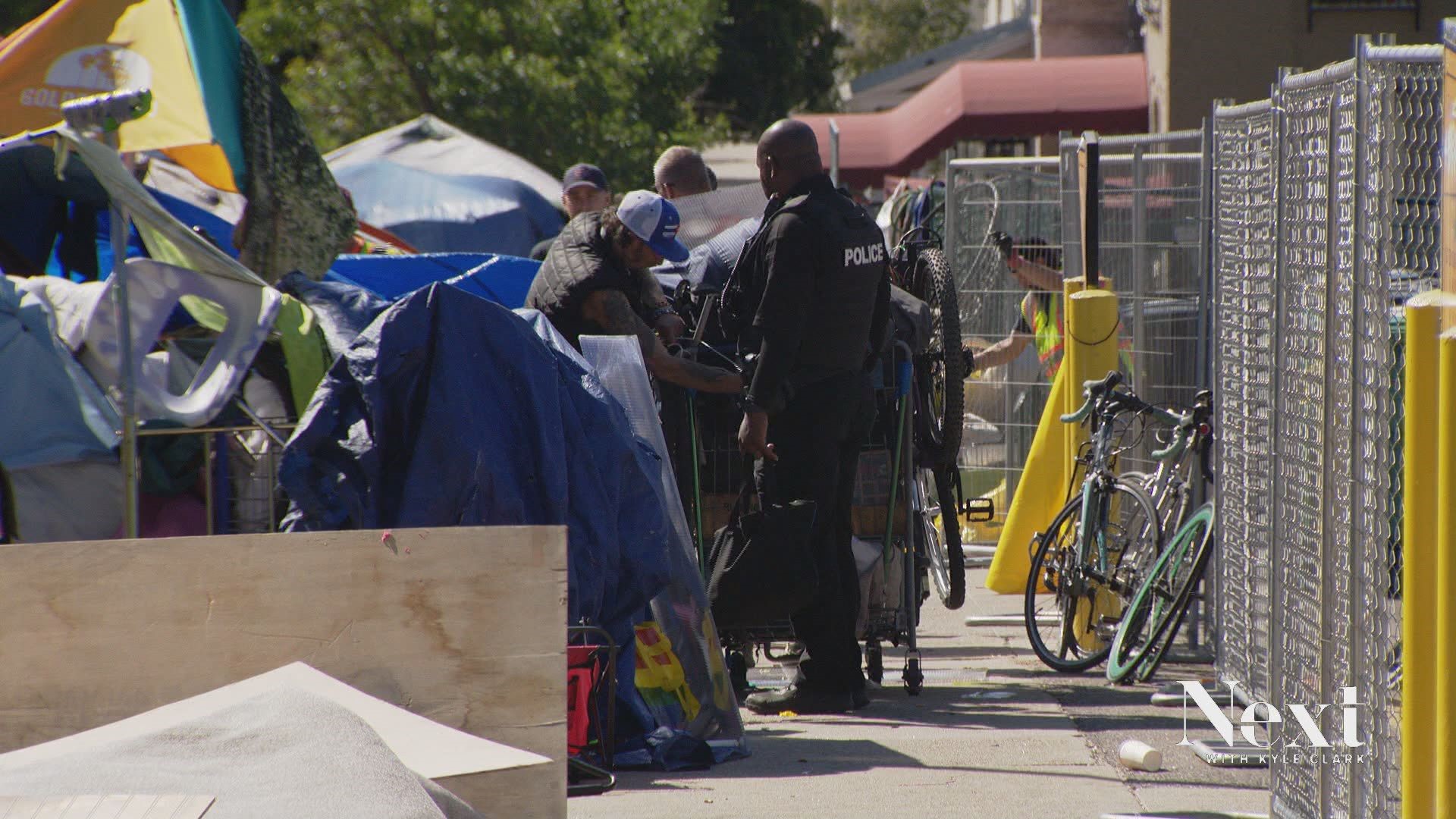DENVER — No one refused Denver's offer to move into a hotel or a micro-community this week when the city swept more than 70 people out of an encampment near the Colorado Governor’s mansion, according to Cole Chandler, senior advisor for homelessness resolution for Denver Mayor Mike Johnston.
If those people all stay in their new hotel room or micro community shelter, they will be added to the city’s House1000 progress dashboard, which as of Wednesday afternoon showed the city had housed 106 people on its way the goal of 1,000 by the end of the year.
The dashboard tracks anyone who the city has helped get off the streets since the mayor’s administration started in mid-July. To qualify to be on the dashboard, someone has to have been off the streets for 14 days.
“We had to decide on a metric for at what point do we count someone as being successful,” Chandler said. “We didn't want that to be one night in a shelter. And so we raised the bar to make it 14 days.”
“But it's not about 14 days, it's about being on a path to permanent housing.”
Advocates for the homeless are applauding Denver’s effort, but they say any metric of success of a program for the homeless has to include permanent housing outcomes.
“When we talk about housing, what we're really referring to is someone has their own space, they have autonomy, they have a lease, they have legal rights,” said Dr. Jamie Rife, director of the Metro Denver Homeless Initiative. “What this effort is doing is getting people into a safer location as they move into housing. So we tend to refer to that as like a bridge housing model, or something temporary.”
“At the end of the day success is getting people into permanent housing, a place where they have four walls, they have a roof, they have autonomy, they have legal rights.”
Chandler said permanent housing is the city’s goal.
“Right now, the reality is that we can't just automatically create the thousands of permanent affordable housing units that we need,” he said. “And so we've created some on ramps to help get people towards housing.”
Chandler wouldn’t say whether the city’s dashboard would remove numbers from the dashboard if someone returns to the streets after the two weeks in temporary housing.
“The reality is that the 14 days is totally not what we're focused on,” he said.
SUGGESTED VIDEOS: Full Episodes of Next with Kyle Clark

